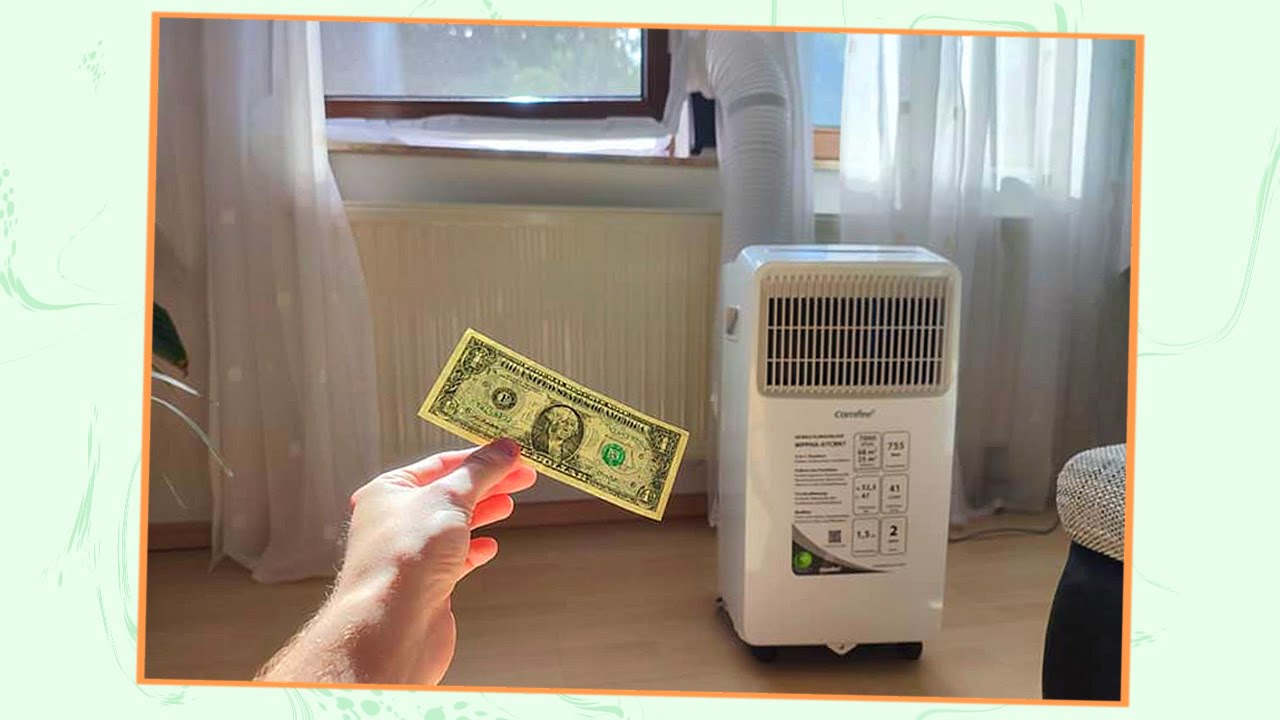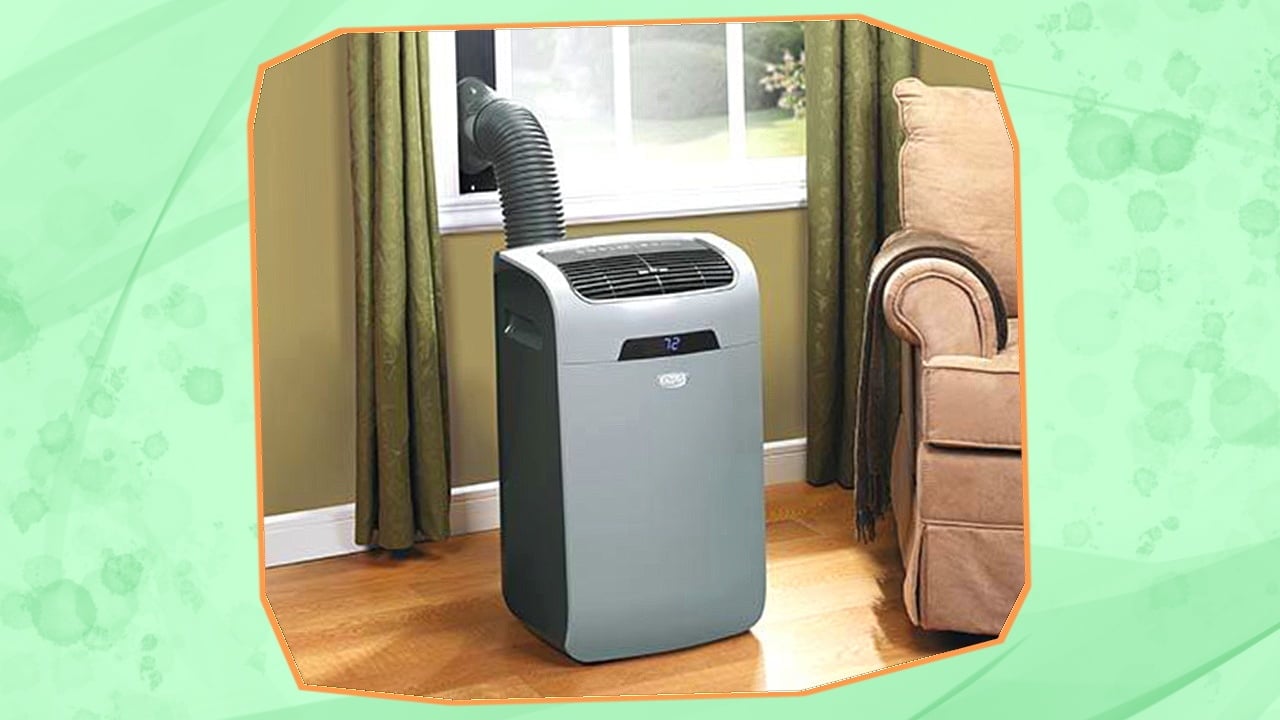Complete Guide On The Cost To Run A Portable Air Conditioner
Portable air conditioners are self-contained, lightweight appliances for heating, cooling, and air conditioning in small rooms while promoting mobility and energy-efficient use. Compared to a central air conditioning system, a wearable AC requires no installation and can be moved from one place to another to target specific zones. Running portable AC units can come with […]

Portable air conditioners are self-contained, lightweight appliances for heating, cooling, and air conditioning in small rooms while promoting mobility and energy-efficient use. Compared to a central air conditioning system, a wearable AC requires no installation and can be moved from one place to another to target specific zones.
Running portable AC units can come with an electricity cost ranging from $0.10 to $0.22 per hour – however, the final cost depends on various factors. These include energy efficiency rating, the portable AC unit’s cooling capacity, weather, electricity pricing, room dimensions, etc.
Despite these variable elements, it is important to be aware of the running costs, including the maintenance and average electricity cost, before purchasing. Having an idea of the potential expenditure will help you make an informed decision while considering your budget.
In this article, I will walk you through some ways to calculate running costs and how to reduce them.
Factors that Affect the Cost To Run a Portable Air Conditioner

Even after running various online calculators that pledge to give you a precise amount, I’ve found discrepancies between their calculations and my electricity bill. Over time, I realized they were different because of various factors I hadn’t considered before. So, here’s a comprehensive list of the things you should keep in mind while calculating running costs to avoid errors.
A. BTU rating
The most obvious factor that affects the power consumption of a portable AC unit is its cooling capacity. It is usually measured in terms of the British Thermal Unit (BTU) and indicates the amount of energy used by air conditioning units to remove heat from a space per hour. While window air conditioners and mini splits use higher cooling power, a portable air conditioner uses less energy.
So, the monthly cost of running a portable unit is logically less than other kinds, like a mini-split system. However, even portable air conditioners have varying capacities, which further affects their energy cost. For example, a portable AC unit with a 12,000 BTU capacity will have a higher running cost than an 8,000 BTU system.
B. Energy Efficiency rating
The Energy Efficiency Ratio or Rating (EER) is a measurement assigned to different appliances based on their energy conservation abilities. In the United States, it is called the Seasonal Energy Efficiency Ratio (SEER), while it’s simply known as EER rating in other countries, including the United Kingdom.
Of course, the higher the EER rating for an air conditioner, the more money it’ll save you long-term. AC units with higher ratings usually cost more, too, but it’s always best to invest a little more for this specification since it’ll save you a lot of hassle in the future.
Tip
If you get baffled by EER ratings, simply look for a portable air conditioner that is Energy Star-certified.
C. Room Size
As a general rule of thumb, an AC unit–be it a window air conditioner or portable system–will take a considerable amount of time to cool a larger room. Consequently, a smaller room will take less power and time to cool down, regardless of the AC type. This is why retailers and salespeople will ask you about the dimensions of the room to help you select the right portable ACs.
Likewise, if you want to install a central air conditioning unit, the installation services will precisely measure your home’s dimensions (in square footage) before giving a quote. The room size is important when calculating how much electricity a portable unit will consume – the bigger the room, the higher the cost.
D. Outside Temperature
In relatively warmer areas, a portable air conditioner works much harder and consumes more energy to cool the space. This is because it usually has less cooling power compared to other AC types. For example, air conditioner operating costs tend to be higher in California or Texas, where the temperature becomes blistering in the summer.
E. Frequency And Duration Of Use
How many hours you use your air conditioner for also affects the total running costs. For example, if the air conditioner runs for 8 hours at once, your energy costs will increase drastically, regardless of whether you have a portable or window AC unit.
Similarly, starting the AC system frequently throughout the day will cost you more money as starting the system will require more electricity.
How To Calculate The Cost To Run A Portable Air Conditioner
While calculating the energy consumption of your portable AC, you should consider the following units–
- Kilowatt-hour rating of the air conditioner
- Electricity costs in your area (per kWh)
- The total running hours of your AC
Kilowatt-hour is a unit for measuring the amount of electricity – simply speaking, 1 kWh means that you can run a 1 kW (or 600 W) home appliance for one hour. Now, let’s look at the formula for calculating the energy consumption:
Energy units/month = kW rating of AC x daily running hours x 30 (or 28 or 31, depending on how many days there are in a particular month).
So, if you buy a 1.5-ton AC that runs for eight hours a day, your monthly power consumption will be 1.5 x 8 x 30 = 360 units/month.And converting this monthly energy consumption into Watts will help calculate the estimated electrical cost – in this case, 360. Use this formula for calculating the cost per month:
Cost (per month) = Energy units x Electricity Cost (per kWh)
So, if your energy consumption per month amounts to 360 units, and the electricity price in your area is $0.10 per kWh, the cost per month will be: 360 x 0.10 = $36. If you want to calculate per-hour cost, there’s another formula you can follow; however, this only works with the cooling capacity (BTU rating) of the AC unit:
Cost (per hour) = Power (in Watt) x Electricity Cost (per kWh) / 1000
Here, you can find the ‘power’ by simply dividing the BTU rating by 10. So, if your portable air conditioner has a 10,000 BTU capacity, it runs on 1000 W power. With this, you can follow the formula and determine the cost per hour (1000 x 0.10 / 1000 = $0.10).
Strategies For Reducing The Cost Of Running A Portable Air Conditioner
A. Choose A Unit With A Higher Energy Efficiency Ratio
As already discussed, a higher EER rating can save you money by helping the air conditioner function efficiently. EER is a ratio of cooling output (in BTU/hour) to electricity input (in Watts) – a higher rating means that the AC unit will provide a better cooling effect for every Watt of energy it uses.
Typically, a window air conditioning unit or mini-split has a higher EER rating compared to portable ACs, but you can find one with a relatively higher EER if you search well enough.
B. Using A Programmable Thermostat Or Timer
Most high-end portable air conditioners come with a built-in timer or thermostat, which you can use to prevent the air conditioner from consuming power when not required. For example, setting the timer for 4 hours means that your portable AC unit will turn itself off after running for the specified amount of time. Likewise, a thermostat, when set at a certain temperature, will stop the system from running when the particular temperature has been achieved.
These simple features can go a long way in saving electricity; however, many portable AC units might not have them built in. In this case, you can buy a programmable timer separately and connect it to the unit if compatible.
C. Keeping The Unit Clean And Well-Maintained
Since a portable air conditioner uses air filters, it is highly likely to accumulate dirt and debris quickly, much like a window unit. This is especially true for systems that have a dehumidifier or air purifier option because they suck in dirty, moisture-laden air and purify it.
Moreover, clogged air filters and internal compressors can make your system work harder to produce cool, which may cause further damage. To prevent this, regularly clean or replace the air filters and wipe the exterior fins or grills with a cloth and cleaning solution.
D. Keeping Doors And Windows Closed To Prevent Cool Air From Escaping
One of the reasons why you’re getting high electricity bills might be because of cold air escaping through loosely closed windows and doors. This prevents the AC unit from achieving the set temperature, making it work longer.
E. Using Fans To Circulate Air
Air conditioners also use energy to circulate cold or hot air throughout the room to achieve the desired temperature evenly. So, you can turn on your ceiling fan to help the AC unit circulate air faster – this ensures the AC uses less energy to blow the air into the space.

Conclusion
After weighing the running costs, the question that comes to mind is this – are portable ACs worth it? If you ask me, I’d say they are worth it if you want to cool a smaller space and move it around different rooms instead of using separate fixed AC units. Moreover, portable air conditioners are known for their low power usage compared to mini splits or window units.
However, despite the several benefits of portable units, it’s essential to consider the running costs to decide whether they’ll fit your monthly electrical budget. The simple formulas I’ve previously mentioned will also help you find a unit with low electric consumption.
With that, I’ll be signing off for now. If you like this article, I recommend reading my Delonghi Pinguino review. Goodbye!
